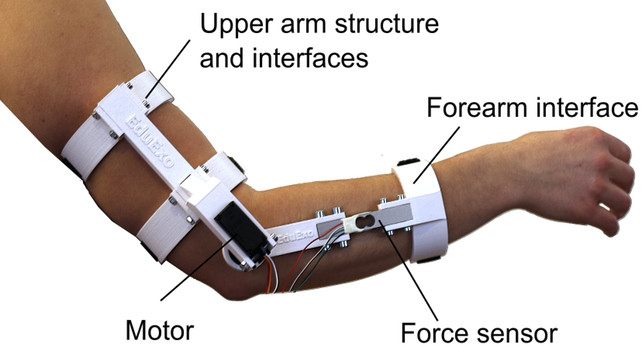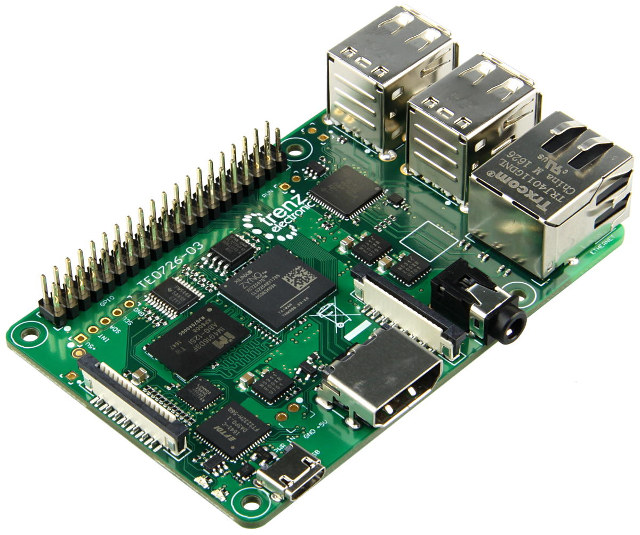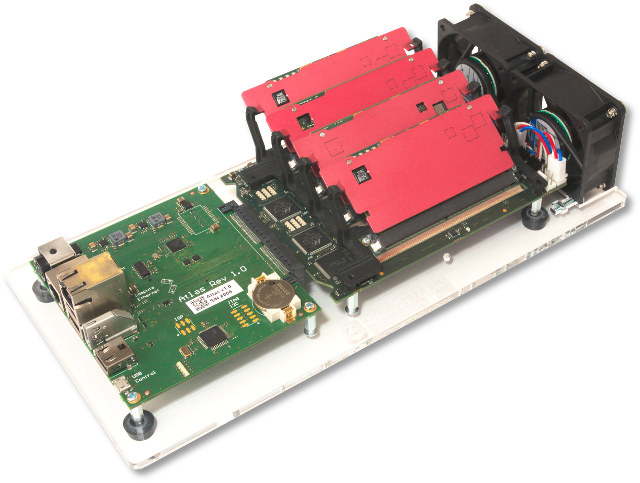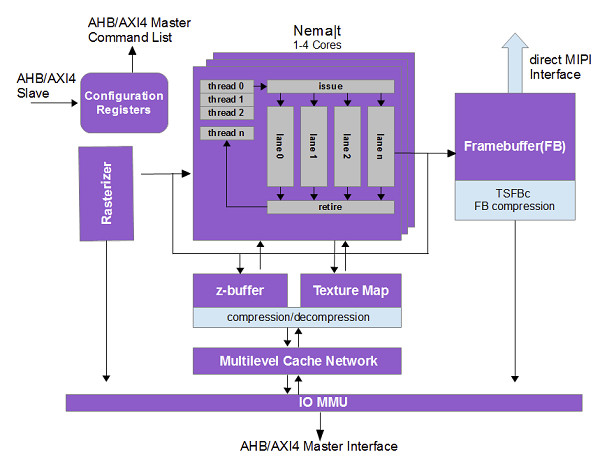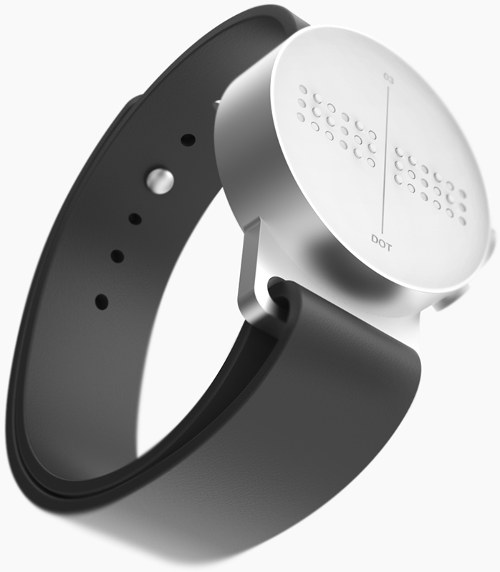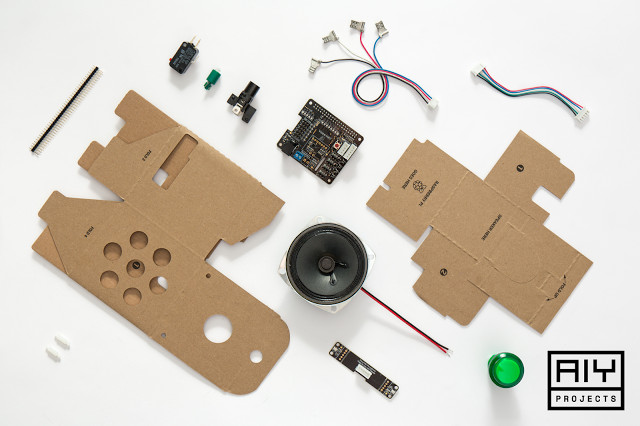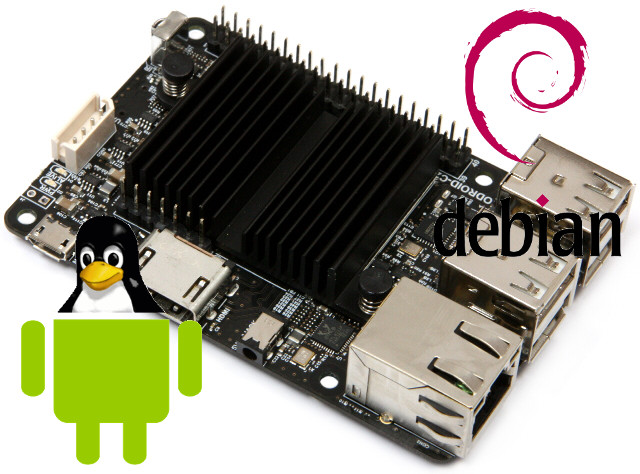Robotic exoskeletons are used for medical purposes such as helping with the rehabilitation of stroke patients, or enable paraplegics to walk again, as well as in the work place to assist people lifting heavy objects. While it’s possible to learn about the theory about exoskeleton technology, practical experience may help grasping all concepts better. However, there are not many courses available, and exoskeletons are usually expensive, so Volker Bartenbach, PhD at ETH in Zürich, has decided to created EduExo robotic exoskeleton kit for education purpose. The EduExo hardware is based on off-the-shelf components like an Arduino UNO board, a motor, and a force sensor, as well as a rigid exoskeleton structure and cuff interfaces. The latter is optional as you can get the kit without it, and will instead receive the STL files to 3D print the parts yourself. There’s also a handbook to help you get started in several […]
Helios4 Personal Cloud DIY NAS Supports 3.5″ Hard Drives, RAID, and More (Crowdfunding)
A few months ago, we covered GnuBee Personal Cloud 1, a NAS that runs on open source software, and that supports up to six 2.5″ SATA drives. The crowdfunding has been successful – after lowering the funding target -, and backers should hopefully get the NAS right after summer. But at the time, some people complained about the memory capacity (512MB), the lack of support for 3.5″ drives, and a few other items. A new project called “Helios4 Personal Cloud” addresses many of those concerns. It comes with 1 to 2GB RAM, enclosure supporting four 3.5″ drives, supports RAID, and is powered by Marvell ARMADA 388 processor that has been specifically designed for this type of application. Helios4 NAS specifications: SoC – Marvell ARMADA 388 dual core Cortex A9 processor @ up to 1.866 GHz with RAID5/6 acceleration engines, security acceleration engines, etc… System Memory – 1 or 2 GB […]
Meet Zynqberry, a Xilinx Zynq FPGA Board with Raspberry Pi 2/3 Form Factor
Earlier this year, I wrote about Trenz Electronic’s Xilinx Zynq Ultrascale+ system-on-module, but I’ve just found out I missed another interesting product from the company. The ZynqBerry is a board powered by Zilinx Zync Z-7007S or Z-7010 ARM + FPGA SoC with Raspberry Pi 2/3 form factor. ZynqBerry specifications: SoC Xilinx Zynq XC7Z007S-1CLG225C (Z-7007S) single core ARM Cortex-A9 MPCore up to 766MHz + FPGA with 23K logic cells Xilinx Zynq XC7Z010-1CLG225C (Z-7010) dual core ARM Cortex-A9 MPCore up to 866 MHz + FPGA with 28K logic cells System Memory – 128 or 512 MB DDR3L Storage – 16 MB Flash SPI flash + micro SD card slot Video Output – HDMI, MIPI DSI interface Audio Output – HDMI, 3.5mm audio jack (PWM audio only) Connectivity – 100 MBit Ethernet via (LAN9514 USB Hub with Ethernet USB – 4x USB 2.0 host ports Camera – MIPI CSI-2 interface Expansion – 40-pin Raspberry […]
Christmann RECS|Box Atlas Quad Apalis Microserver Evaluation Kit Supports Four Toradex Apalis SoM
System-on-modules are normally used in low volume embedded systems, but they can also be used in microservers, for example to upgrade capacity as needed. Christmann informationstechnik + medien GmbH has developed a microserver evaluation kit taking up to 4 Toradex Apalis SoMs for example based on Nvidia Tegra K1 processor, and also offers full rack systems with up to 72 modules. Christmann RECS|Box Atlas Quad Apalis specifications: Modules – 4x Slots for Apalis SoM Connectivity – 1 GBit/s Compute Ethernet, 1 GBit/s Management Ethernet Video Output – 1x HDMI USB – 3x USB host ports, 1x micro USB port Misc – 5 Status LEDs for USB, communication, and serial console, 4x fan connectors, KWM switch, 5x temperature sensors, 6x current sensors, 1x voltage monitor, fan speed monitoring Power Supply – 12V via a 4-pin jack Dimensions – 300 x 145 x 68 mm The evaluation kit includes an Atlas board […]
Think Silicon Ultra Low Power NEMA GPUs are Designed for Wearables and IoT Applications
When you have to purchase a wearable device, let’s say a smartwatch or fitness tracker, you have to make trade offs between user interface and battery life. For example, a fitness tracker such as Xiaomi Mi Band 2 will last about 2 weeks per charge with a limited display, while Android smartwatches with a much better interface need to be recharged every 1 or 2 days. Think Silicon aims to improve battery life of the devices with nicer user interfaces thanks to their ultra-low power NEMA 2D, 3D, and GP GPU that can be integrated into SoCs with ARM Cortex-M and Cortex-A cores. The company has three family of GPUs: NEMA|p pico 2D GPU with one core 4bpp framebuffer, 6bpp texture with/out alpha Fill Rate – 1pixel/cycle Silicon Area – 0.07 mm2 with 28nm process Power Consumption – leakage power GPU consumption of 0.06mW; with compression (TSFSc): 0.03 mW NEMA|t […]
Smartwatch for the Blind – Dot Watch Supports Braille Language, Sync Data over Bluetooth
A South Korean company has created Dot smartwatch specifically designed for the blinds and visually impaired, as it supports Braille language through 24 dots that move up or down depending on the data to show. Like other smartwatches, it will also pair with a smartphone, and received notifications over Bluetooth to Android and iOS smartphones. Dot watch specifications: Wireless MCU – 32-bit ARM Cortex M4F + Cortex M0 microcontroller “Display” – 4 Dot Cells (24 Dots) made of 6000 series silver aluminum Connectivity – Bluetooth LE 4.2 Misc – 24 touch sensors, shaft horizontal vibration motor, a crown, two buttons Battery – 400mAh li-polymer battery good for a typical 7 days on a charge Dimensions – Watch: 43mm x 12.5mm; Leather band – S size: 22x220mm; M size: 22x250mm; L size: 22x290mm Weight – 27g This is all made possible through the company’s dot rotor technology that allows to move […]
AIY Projects Voice Kit Transforms Raspberry Pi 3 Into Google Home, Comes Free with Raspberry Pi Magazine
We’ve just reported about the preview release of Google Assistant SDK that works on the Raspberry Pi 3, and other boards with a microphone, speakers, and access to Internet. The Raspberry Pi foundation and Google have now made it even easier, as they launched AIY Projects Voice Kit with a Google Voice HAT, a speaker, a stereo microphone Voice HAT board, a button, a few cables, and a cardboard case. You’ll just need to add your own Raspberry Pi 3, follow the instructions to assemble kits, load and setup the software. Once this is all done, you’ll be able to press the top button, asking anything you want to Google Voice, including the weather. Price? Sort of free, as it comes with MagPi 57 magazine, where you’ll also find detailed instructions for the kit. Google AIY Projects got its name from a mix between (DIY) and artificial intelligence (AI), and […]
VolksPC OS Runs Android and Debian Simultaneously on ODROID-C2 Board
Most development boards and some TV boxes offer a dual boot image with Android and a Linux distribution. To run an Android app, you need to boot to Android OS, and if you decided you need to run Linux, you then need to reboot to the Linux OS, and you can’t simply use Alt+Tab to easily and quickly switch between Android and Linux apps. But VolksPC offers just that: the ability to run Android and Debian side-by-side, and I tested their MicroXWin unified distributions with MK808B TV stick powered by Rockchip RK3066 processor a few years ago. It was early stage at the time (July 2014), and there was some stability issues.The company has kept working on their solution, but focused on more powerful hardware, and they have now released VOLKSPC OS for ODROID-C2 with Debian XFCE and Android Marshmallow, which will run both Android and Debian applications at the […]


